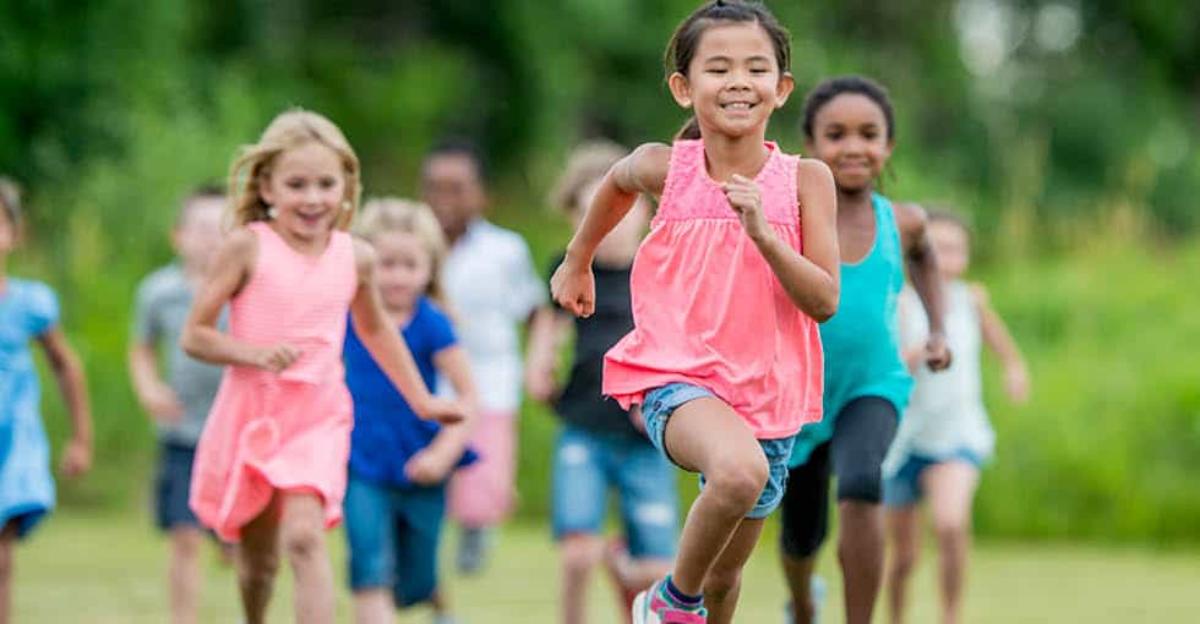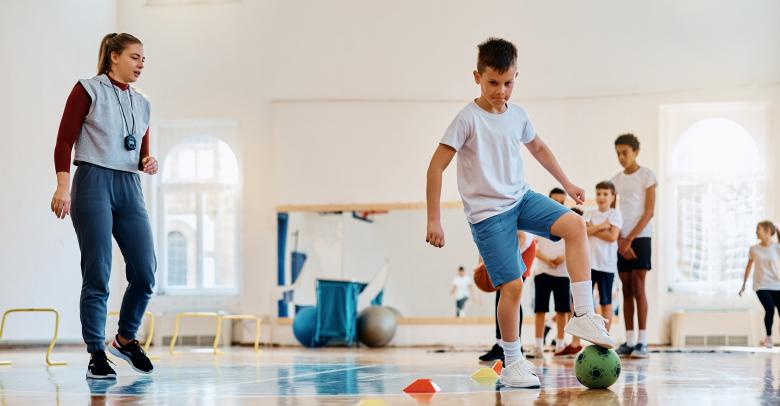In our last blog we discussed various ways physical educators could promote heart health. One of those ways was through physical activity. In this post we will give you some specific physical activities and games that can help teach and reinforce heart health this month and throughout the year.
Kindergarten – 2nd Grade
According to SHAPE America PE Standards, from the time children are in K-2nd grade they should begin learning some basic information on the heart. They should be able to recognize the basic body cues for moderate-to-vigorous physical activity (MVPA) and that the heart is a muscle that gets stronger through MVPA. During these grades the focus is on these fundamentals. Try any of these:
- As you play a vigorous activity like a game of tag or other running activity, give them a rest between rounds and discuss the heart. “Take a deep breath. Did your chest get bigger? That is because your lungs fill up, like a balloon, with the air you breathe. Your lungs take oxygen from the air we breathe and put it into your blood. Then your heart, which is a muscle, pumps it out to the rest of your body. You need to breathe faster to get more oxygen when you’re active because all the muscles you move need that oxygen! That is why when you’re active, you breathe harder and your heart beats faster!”
- Whenever your students are engaged in MVPA, take a little breather and have them feel their body cues. Have them tell you what is happening inside their bodies.
3rd – 6th Grade
Students at this age should be learning the components of health-related fitness, which activities help enhance which component, and the impact of food choices on their health. Here are some ideas for addressing these:
- Set up a Mixed Fitness Circuit where each of the stations focuses on one of the five components of health-related fitness. During transitions between stations, students talk with others in their group about that component and other activities they enjoy that address it.
- Play tag games to reinforce the five components of Health-Related Fitness. If you are tagged, you must go to the re-entry area where one of the components is written on a card. You must do 30 seconds of that type of activity before re-entering the game. Switch the cards often so students see all five components throughout the game.
- Do a Survivor Challenge where students work together in small groups to complete various fitness challenges and answer questions about heart health.
- Complete a Mixed Fitness BINGO where students find classmates who answer heart health questions and/or do fitness tasks provided on a BINGO-style card.
- Lead a “Create a Routine” where pairs create an Aerobic Capacity routine and teach it to others.
Middle School
Students in middle school should be designing and implementing their own fitness program focusing on areas of weakness found in their fitness assessments, maintaining logs for physical activity and nutrition, defining resting heart rate and understand its relation to aerobic fitness, and using the Rating of Perceived Exertion (RPE) Scale to determine their workout’s intensity. They should also be able to balance healthy food intake with physical activity and describe the relationship between poor nutrition and heart health risks. Here are a few ideas to address these grade-level expectations:
- Teach students to take their heart rate and practice comparing these results to the RPE scale after doing light, moderate, and vigorous physical activity.
- Assign a workout log for two weeks, then analyze for activity levels and which components of Health-Related Fitness are lacking (if any).
- Design a fitness program focusing on one component of Health-Related Fitness they scored low on in the FitnessGram. Complete the program for four weeks, then retest.
- Before activity, take a “resting” heart rate. After activity, time how long it takes to return to that heart rate. Discuss recovery rates.
- Complete a Heart Rate or Pedometer Log for one week.
- Complete a Mixed Fitness Circuit using all of the five components of Health-Related Fitness. At the Body Composition stations have students discuss energy balance and healthy snack foods.
High School
Through the high school years, students build upon their fitness knowledge and are expected to calculate their own Target Heart Rate (THR) and use that when developing their fitness plan, pace themselves to stay within their THR, develop a fitness program for others, and create and implement a healthy nutrition plan. Below are a few ideas to help address these outcomes:
- Teach students the formula for calculating their Target Heart Rate Zone for the goals they have.
- Students set a goal for something they tested low in. Then use the FITT Principle to develop an action plan to reach that goal.
- During low, moderate, and vigorous physical activity, students take their heart rate to see if they are in their zone. Teach and practice many times so this becomes a habit.
- If heart rate monitors are available, students use to learn to get to their THRZ and stay in it for a good portion of class time.
- Discuss healthy nutrition and students set a goal per week for three weeks on things to improve in their diet.
There are so many ways to teach and promote heart health. Use these ideas as is or to help you create your own. Share what works with other teachers at your school and your district. Now, stop reading blogs and get busy!






Leave a Reply